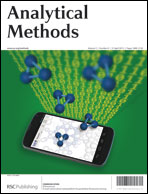RRLC-MS/MS method for the quantitation of atractyloside in Fructus Xanthii (Xanthium sibiricum)
Abstract
Fructus Xanthii (Xanthium sibiricum) is used as a traditional Chinese medicine (TCM) but contains the toxin atractyloside. Historically the bur's spines are thought to be a reservoir of the toxins and removal of these spines theoretically reduced toxicity. However, this has not been proven and, furthermore, the Chinese Pharmacopoeia does not provide a quantitative method to evaluate the potential toxicity of this herb. Thus, the objective of this study was to provide a quantitative method using hydrophilic interaction liquid chromatography-tandem mass spectrometry to determine atractyloside content and concentration of Fructus Xanthii (Xanthium sibiricum) for the first time. Additionally, this method was validated and applied to evaluate the distribution and concentration of the atractyloside of this TCM in different plant parts including the spines, shell, seed-coat and seed kernel. The results of this analytical methodology applied to 27 samples of Fructus Xanthii (Xanthium sibiricum) demonstrated that this process improved sensitivity and accuracy and reduced the time commitment to evaluate this herb and others which potentially contain atractyloside. Furthermore, this study demonstrated that atractyloside is mainly stored in the seed kernel and not the spines as the historical thought.


 Please wait while we load your content...
Please wait while we load your content...